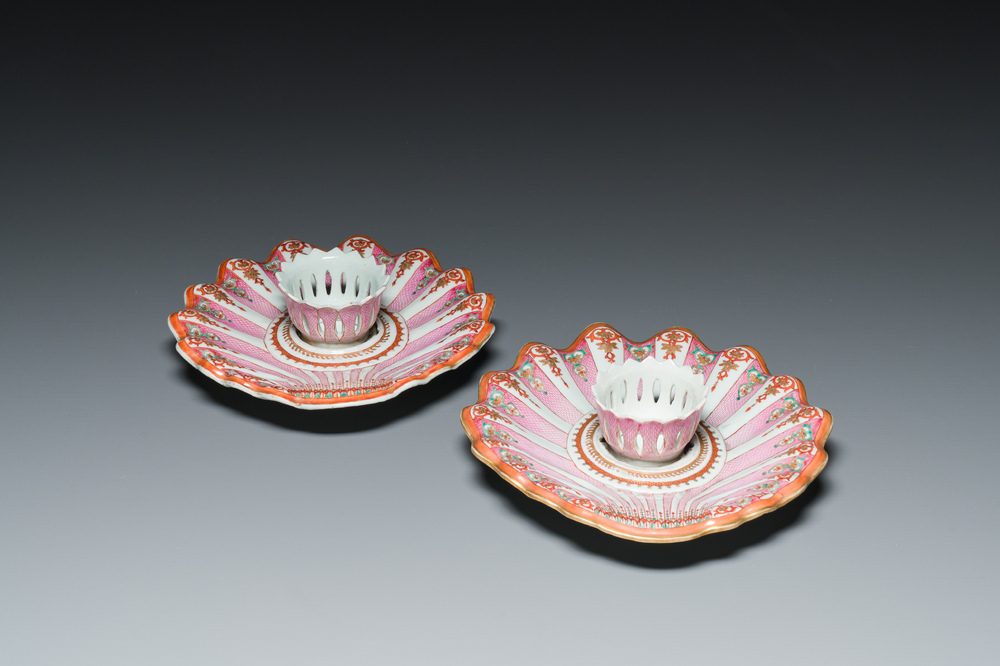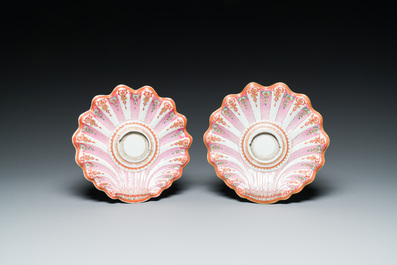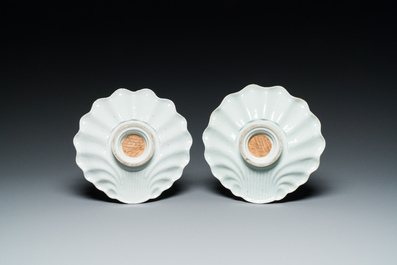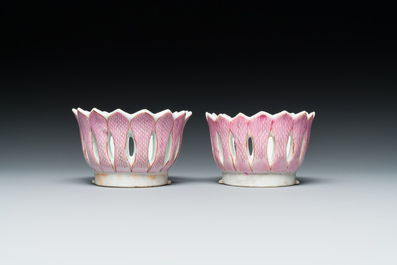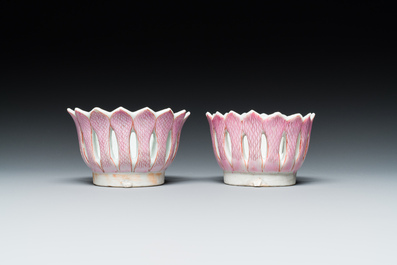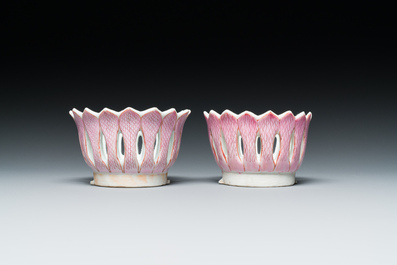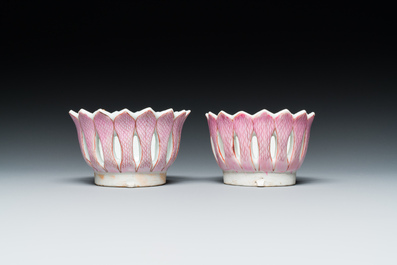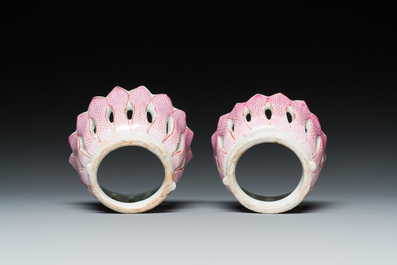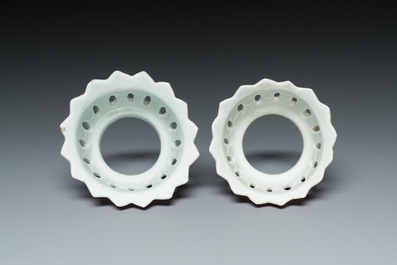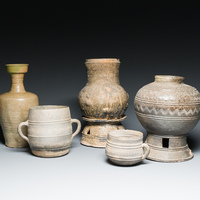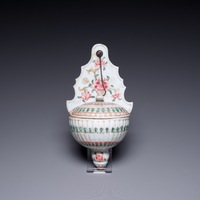We have to double-check your registration and make sure this is not an automated entry in our system. Please complete the test below...
A pair of fine Chinese famille rose trembleuse stands or 'mancerina', Qianlong
L.: 25,5 cm – H.: 4 cm (the stands)
Dia.: 7 cm – H.: 4,5 cm (the cups)
Provenance:
- The collection of Tove and Karl Emil Strømstad (born 1936), Norway.
- Acquired in 1894 by or from Thomas WU (?), for the price of GBP 5.50 each, according to the label on the base.
Ref.:
- Christie's, The Tibor Collection, New York, April 10, 2019, for a nearly identical pair. (sold USD 5.000) (link)
The accompanying text states:
The mancerina is closely associated with the Hispanic market and with the Spanish custom of chocolate drinking. Both chocolate and silver of course came from the Spanish New World, so it is fitting that this form was often made in silver as well as in Spanish maiolica. It is said that the 2nd Marqués de Mancera, Viceroy of New Spain 1664-1673, had a palsied hand and thus needed the all-in-one cupstand, which took his name, though none survive from this early period. Interestingly, a very similar form exists in Chinese ceramics of the Song period, which may have influenced the development of the export examples.
For a Mexican silver mancerina see H.R. Borrell et al, The Grandeur of Viceregal Mexico, p. 380. An almost identical single export mancerina is in the Museo Nacional de Historia, Mexico City, and illustrated by M. Priyadarshini, Chinese Porcelain in Colonial Mexico, p. 123.
- Denver Art Museum, Accession Number 2017.143, for a similar yet less elaborate example. (link)
The accompanying text by Jorge Rivas Pérez states:
This large Chinese famille rose mancerina decorated with flowers is a specialized item found in chocolate services. The mancerina is a deep, wide saucer, often in the shape of a seashell, with a cup holder in the center to hold the jícara (chocolate cup) in place and prevent it from tipping over. It was invented in Mexico in the mid-1600s and named after Don Antonio Sebastián Álvarez de Toledo Molina y Salazar, 2nd Marquis of Mancera, and Grandee of Spain (c. 1608 - 1715), a Spanish nobleman who was Viceroy of New Spain (Mexico) from 1664 to 1673.
Mancerinas became very fashionable across the Spanish empire during the colonial period and were manufactured in both silver and ceramic. In the 18th C., thanks to the trade with Asia via the Manila Galleon, porcelain mancerinas were also produced in China for the Mexican market. This example, a Qianlong period (1736-1795) famille rose mancerina decorated with flowers from circa 1760-70, is representative type of the Asian export wares for the Spanish market.
